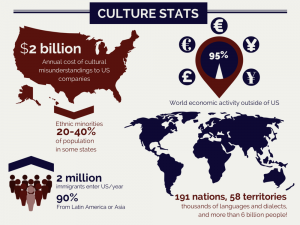When we consider digital media, it’s easy to overlook the cultural and social contexts, and how much time publishers devote to framing the individual elements of the text. For example, I think of the attention to the color red on a stop sign, which catches the driver’s attention and signals the message’s urgency. On its own, a red octagon had no meaning. It was through the use of multimodality, through the inclusion of the text “STOP”, that we created its cultural context. Defined by Gunther Kress in “Where meaning is the issue,” a sign (broadly speaking) is “the conjunction, invisible and indivisible, of form and meaning” (Kress 14). This is what we have done with road signs. We have directly connected form to meaning, so that drivers anywhere in the U.S. can now recognize the symbol of a stop sign.

However, this would not hold true across cultures. As mentioned by okkerse, no work exists within itself, but is “constantly modified and re-understood based on the time and place in which the work is being viewed.” Though some features of the form have been adopted in other countries, there is also some noticeable variation. Indeed, the most important element of the stop sign across cultures seems to be its attention-grabbing color, which frames the message in urgency.

I believe this need for framing is inherent in a visual mode of representation. Writer/Designer reveals: “Framing positions a viewer to see a visual text from a certain perspective and offers a way to describe how a visual text is presented–both its literal frame, like a window or picture frame (the lines around what we see), and the sight lines within it that draw our focus. Focusing on how something is framed helps us think about what is important in a text” (Arola et al., 15). Framing is perhaps the most important element to consider when publishing texts in a global world, focusing less on what elements or modes you choose than the placement, size, and shape of these objects–a set of choices involved in visual modes of representation that is not present in written, print media (Kress 16). Your message could be incredibly well intentioned, but if you frame it incorrectly, you could still insult someone from another culture.
Culturally and globally, I think it is very important to consider how we present something, including which modes we choose to employ in our representation.Certainly, touchpoints will play a great role here, predicting the impact and prominence any piece of media will have with various cultures (whether this be through people, places, events, processes, services, tasks, texts, or experiences). After all, it’s easy to forget just how small a part the United States has to play in our present-day cultural-world.

Word Count: 468
Works Cited:
Arola, Kristin L., et al. “What Are Multimodal Projects?” Writer/Designer: A Guide to Making Multimodal Projects, 2nd ed., Bedford/St.Martin’s, 2014, pp. 3–33.
Kress, Gunther. “Where Meaning is the Issue.” Multimodality. pp. 1-17.